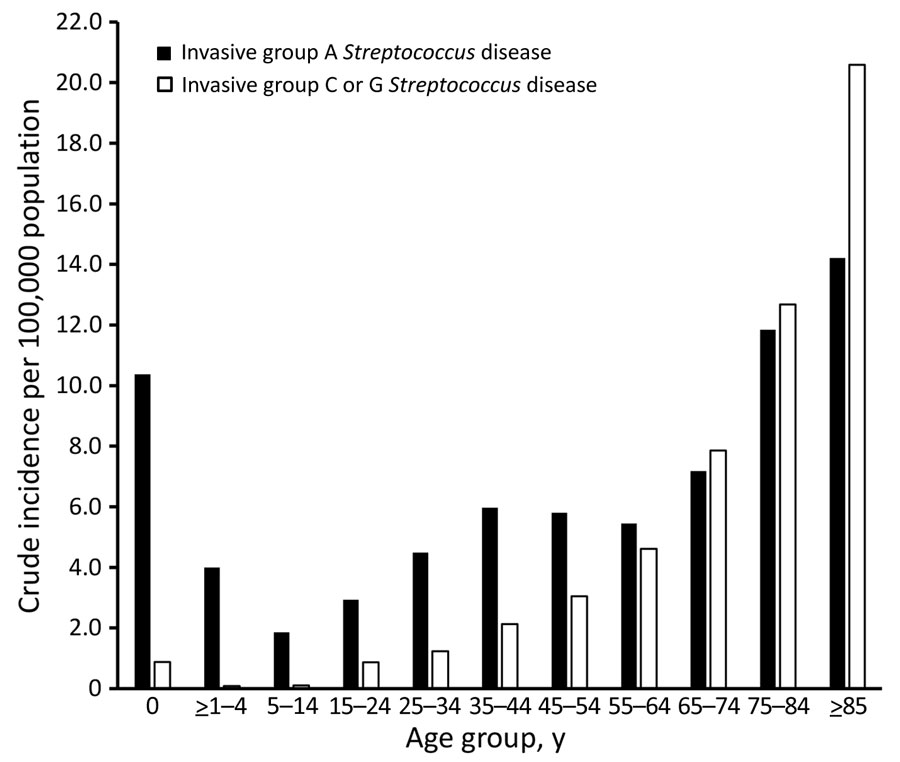Volume 28, Number 11—November 2022
Research
Invasive Infections Caused by Lancefield Groups C/G and A Streptococcus, Western Australia, Australia, 2000–2018
Figure 2

Figure 2. Age group distribution of invasive group A and C/G Streptococcus disease, Western Australia, Australia, 2000–2018.
Page created: September 06, 2022
Page updated: October 21, 2022
Page reviewed: October 21, 2022
The conclusions, findings, and opinions expressed by authors contributing to this journal do not necessarily reflect the official position of the U.S. Department of Health and Human Services, the Public Health Service, the Centers for Disease Control and Prevention, or the authors' affiliated institutions. Use of trade names is for identification only and does not imply endorsement by any of the groups named above.